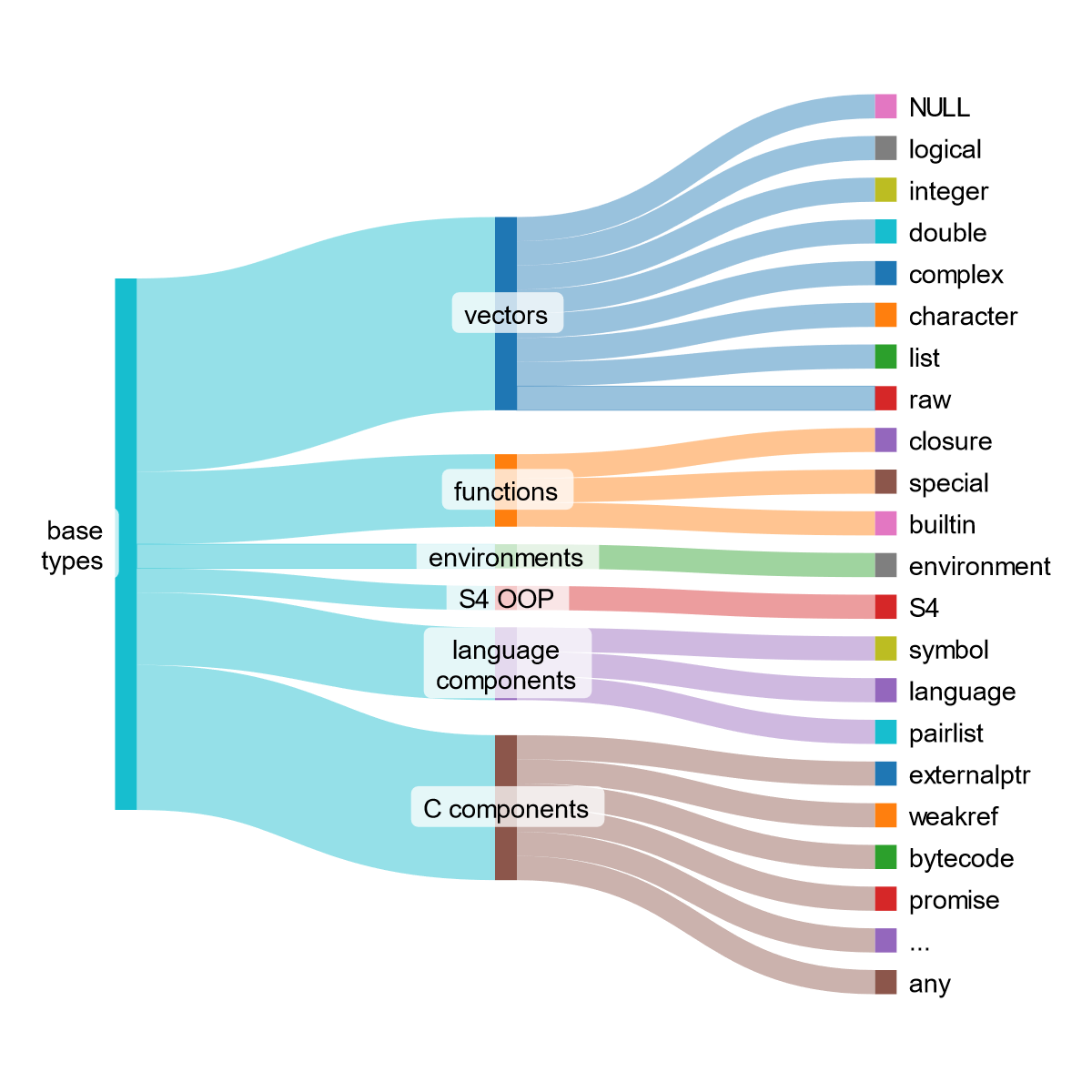12.8 What about types?
Only OO objects have a “class” attribute, but every object–whether base or OO–has class
12.8.6 Concept Map

Base types in R
Sankey graph code
The graph above was made with SankeyMATIC
// toggle "Show Values"
// set Default Flow Colors from "each flow's Source"
base\ntypes [8] vectors
base\ntypes [3] functions
base\ntypes [1] environments
base\ntypes [1] S4 OOP
base\ntypes [3] language\ncomponents
base\ntypes [6] C components
vectors [1] NULL
vectors [1] logical
vectors [1] integer
vectors [1] double
vectors [1] complex
vectors [1] character
vectors [1] list
vectors [1] raw
functions [1] closure
functions [1] special
functions [1] builtin
environments [1] environment
S4 OOP [1] S4
language\ncomponents [1] symbol
language\ncomponents [1] language
language\ncomponents [1] pairlist
C components [1] externalptr
C components [1] weakref
C components [1] bytecode
C components [1] promise
C components [1] ...
C components [1] any